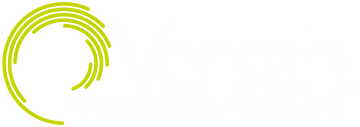Overview: In these cases the anterior maxillary wall is very concave. The pathway is intra-maxillary with a totally extra sinus path. A tunnel osteotomy is created through the alveolar crest to come out into the external maxillary wall and then re-enter again as a second tunnel osteotomy into the body of the zygoma to come out through the superolateral aspect of the body of the zygoma. Between the two tunnel osteotomies the maxillary wall is very concave and therefore, there is no groove/channel osteotomy between the two tunnel osteotomies i.e. the middle part of the implant body would not touch the most concave part of the wall.

Step 1:
The tunnel osteotomy is initiated with the Universal Densah® pilot drill through the alveolar crest in clockwise (CW) mode to come out buccally through the maxillary buccal plate/anterior maxillary wall. Then the Universal Densah® Burs are used in a consecutive increasing order of 2mm, 2.3mm, 3mm, & 3.3mm in the counterclockwise (CCW) mode to widen the crestal osteotomy and achieve preservation and Osseodensification of the alveolar bone.


Step 2:
Using the appropriate length ZGO Densah® pilot drill (65mm or 90mm) depending on the patient’s anatomy and size in CW mode, enter the previously prepared crestal tunnel osteotomy to come out glancing along the concave part of the anterior maxillary wall to penetrate and re-enter the inferior surface of the zygoma, then through the body of the zygoma to exit the superolateral surface of the body of the zygoma thereby creating a tunnel in the zygomatic bone.

Step 3:
After the pilot osteotomy, depending on the patient’s anatomy and size, use the appropriate length ZGO Densah® Burs (65mm or 90mm) Starting with ZGO Densah® Bur ZT1525, to widen the crestal tunnel crestal osteotomy in CCW mode and then glance along the concave part of the anterior maxillary wall. Switch to CW mode to penetrate and enter the inferior surface of the zygoma, through the body of the zygoma and exit the superolateral surface of the body of the zygoma, thereby widening the tunnel in the zygomatic bone. Zygoma bone hardness and implant diameter will determine the final ZGO Densah® Bur diameter.

Step 4:
The zygoma hardness and implant diameter will determine the final ZGO Densah® Bur diameter i.e.; ZT2535, or ZT3040 The ZGO Densah® Burs best to be utilized CCW/CW as needed based on bone density at 800-1500rpm with copious irrigation.
1) Clockwise (CW) cutting mode for denser bone
2) Counterclockwise (CCW) densifying mode for softer bone
3) A combination of CW & CCW using the Densify- Preserve after Cut (DAC) protocol for intermediate bone hardness

Step 5:
The zygomatic implant is then placed. The implant head is located in the alveolar crest. The middle part of the implant body does not touch the most concave part of the anterior maxillary wall. In this intra-maxillary extra sinus path the implant contacts bone at:
1) The alveolar crest coronally
2) The zygomatic bone apically


* Data on file, visit versah.com/our-science/ for Zygomatic Implant studies
Clinician judgement and experience should be applied in conjunction with this clinical practice suggestive use protocol.
10530 REV04 11/2023
